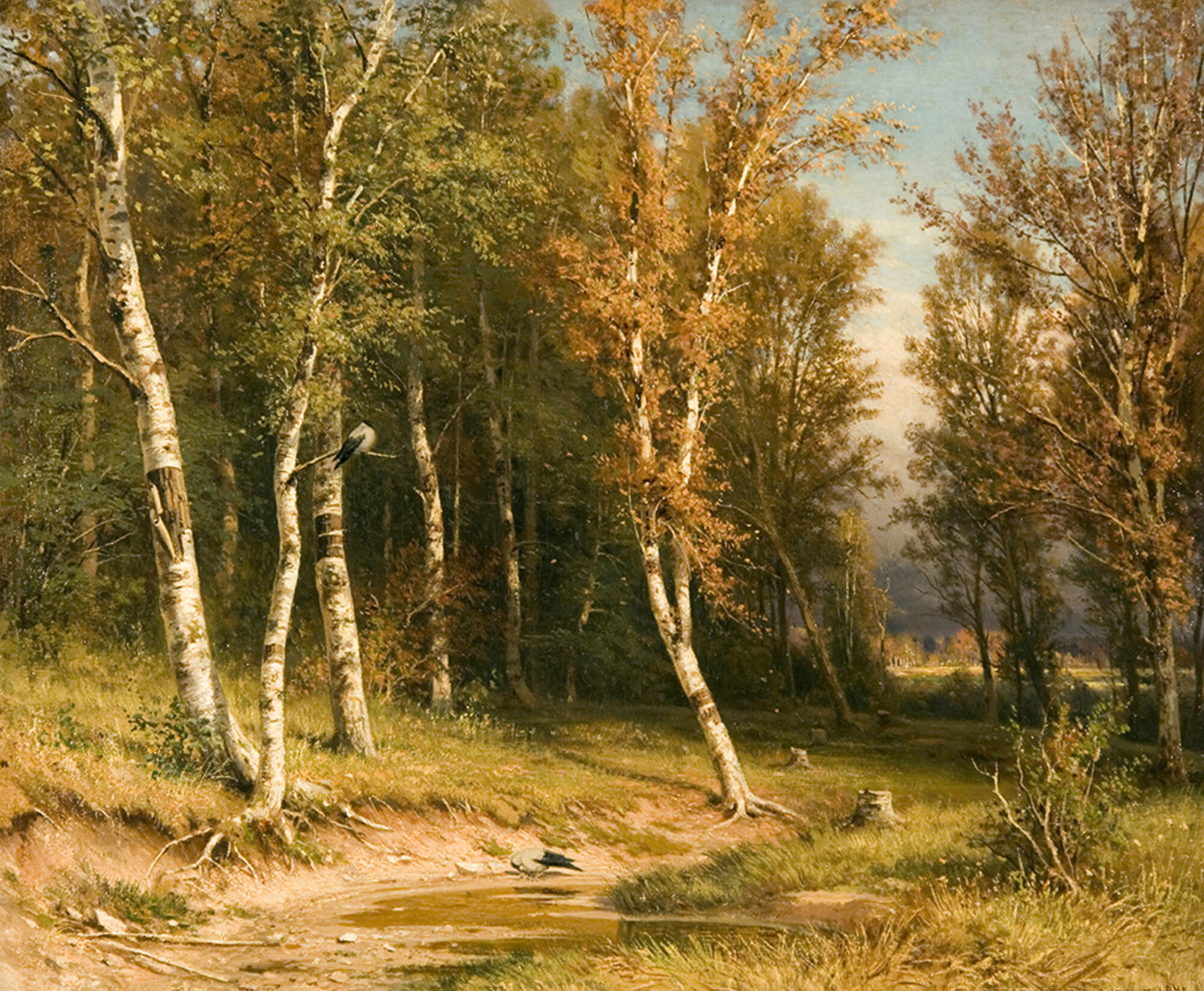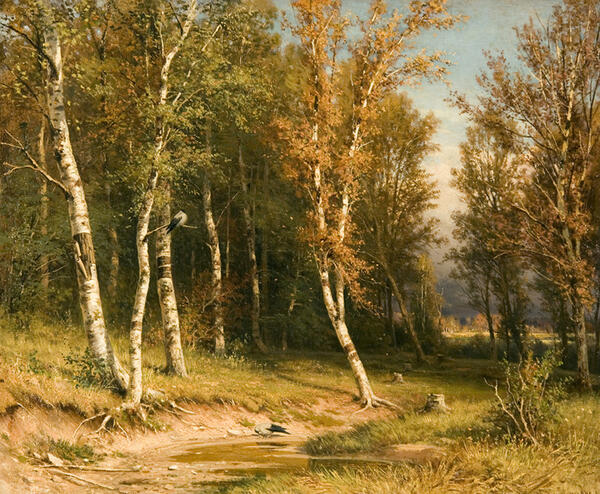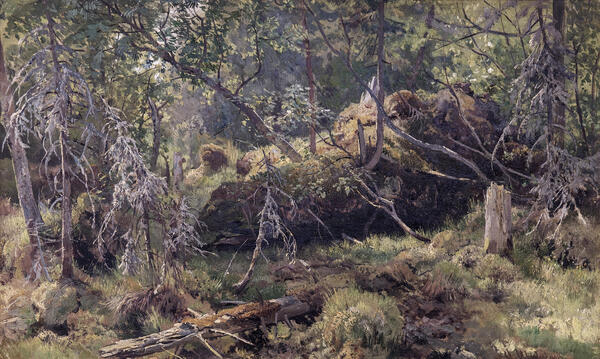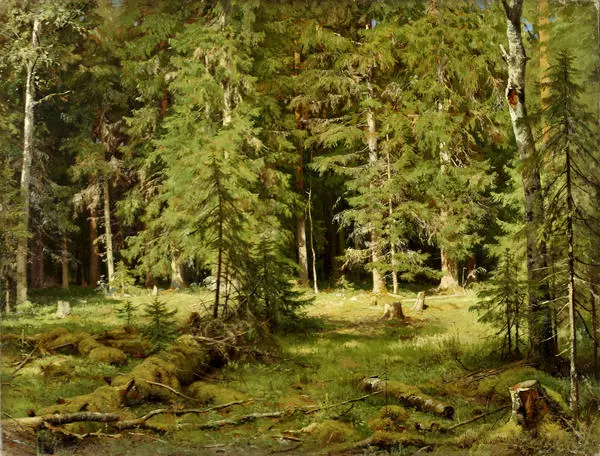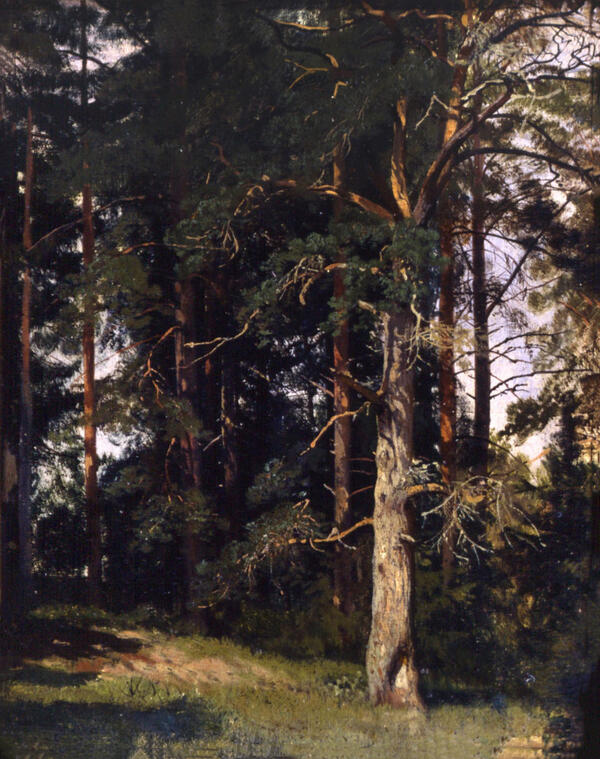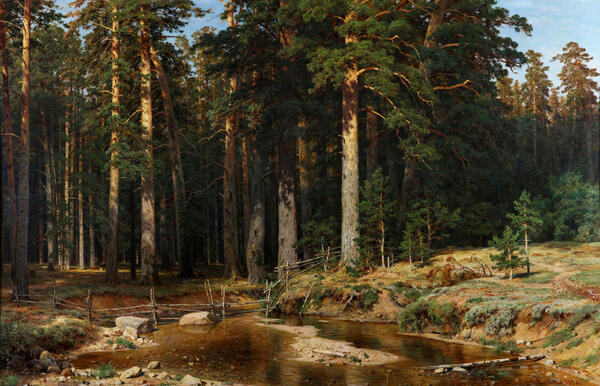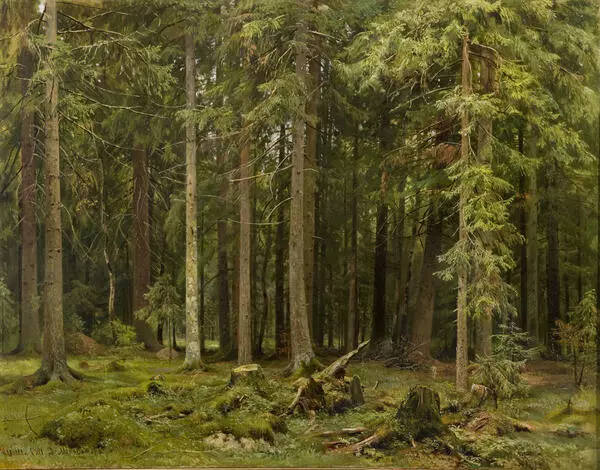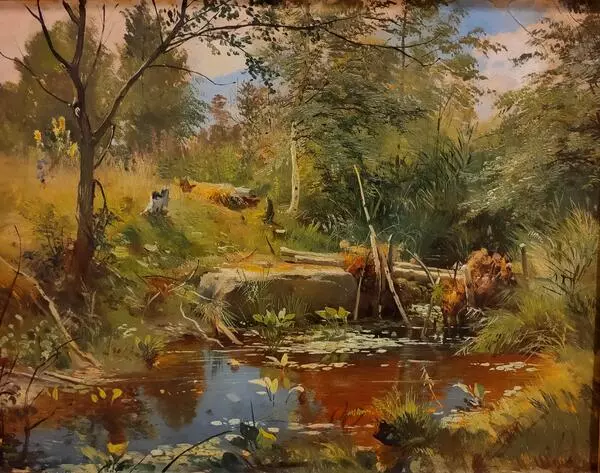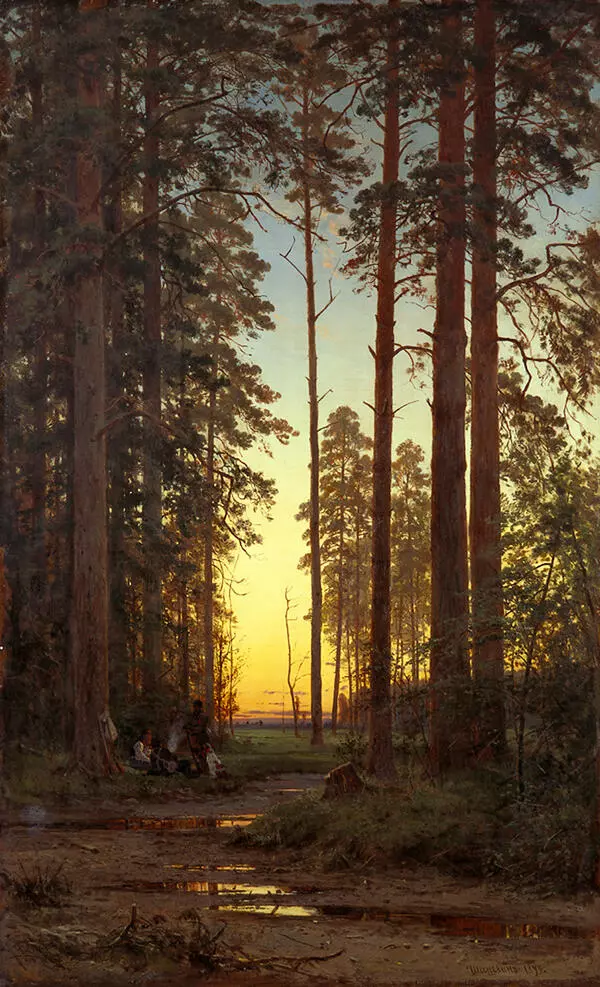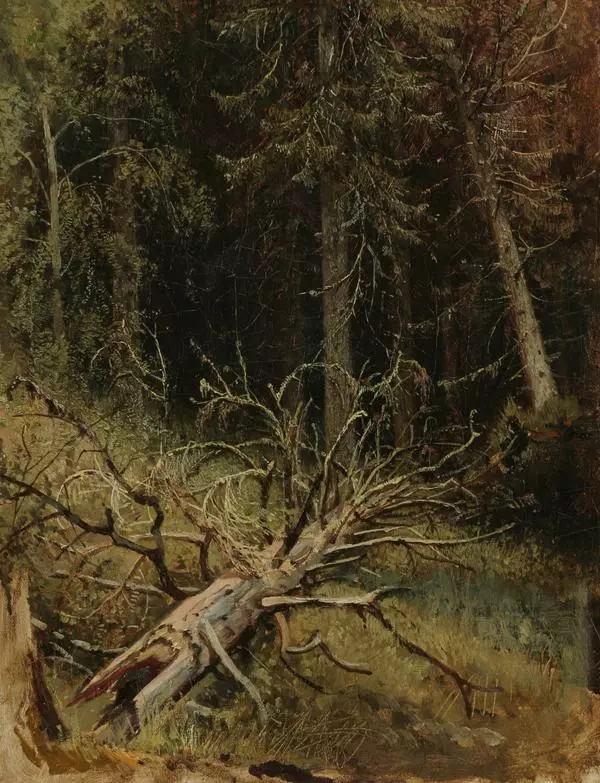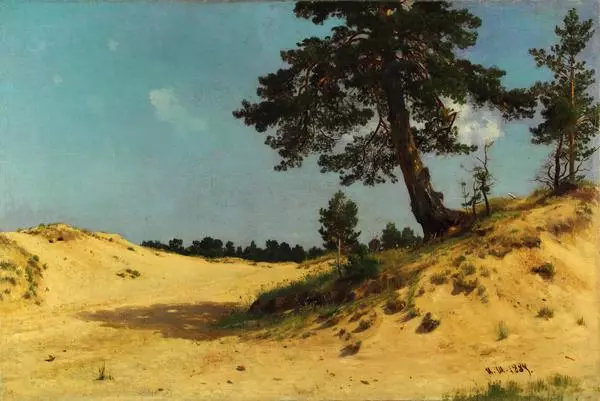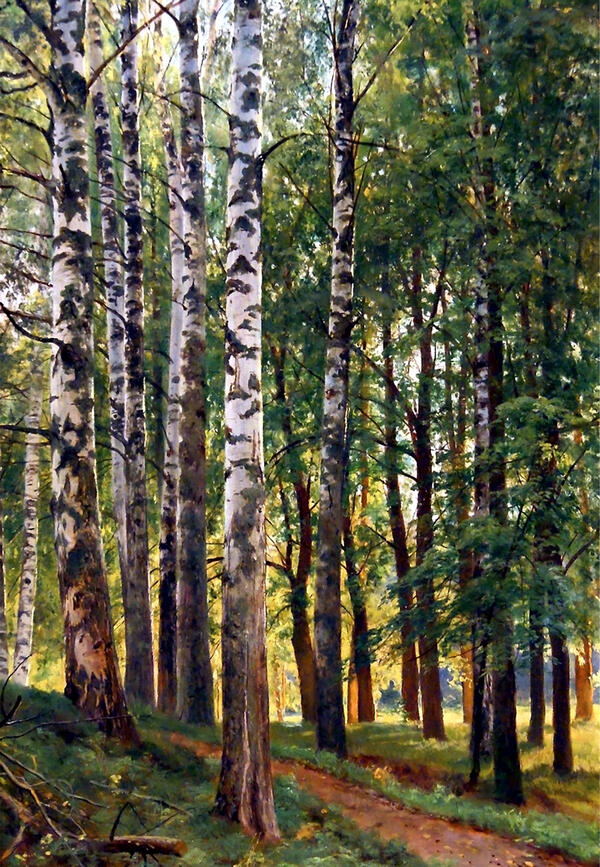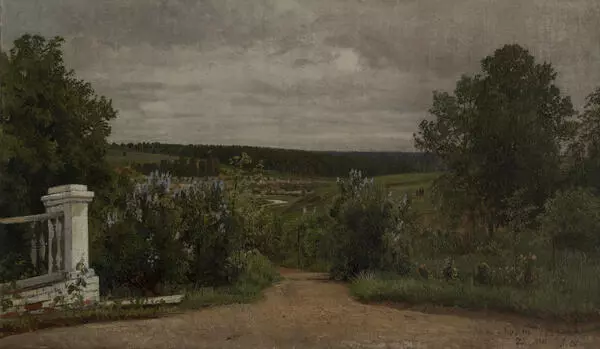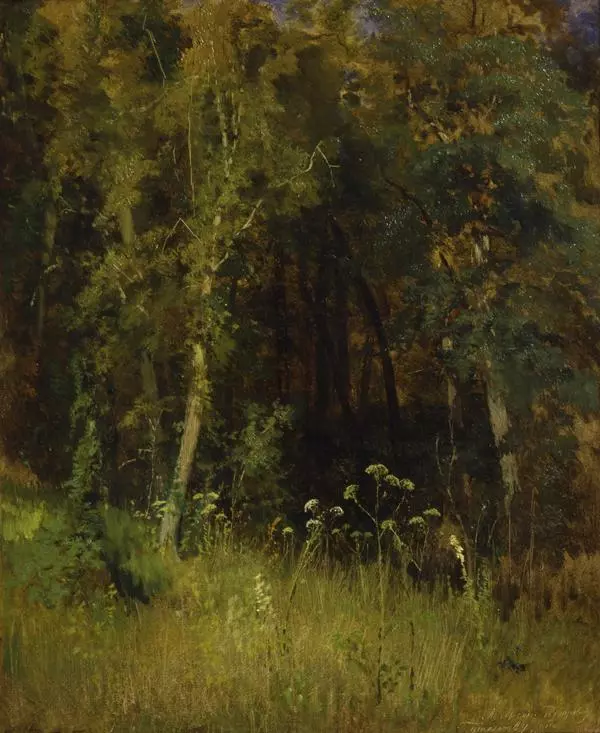In the list of brilliant Russian landscape painters, Ivan Shishkin occupies one of the most important and honorable places. His name is associated with the famous paintings ‘Rye’ (1878), ‘Amongst the plain valley… (1883), “Forest horizons"(1884), ‘Ship Grove’ (1898). These and many other of his works became symbols of Russian nature long time ago. According to the writer Lev Leonov’s remark in his novel “The Russian Forest, ” “hardly any other nation entered the history with such a rich pine coat on its shoulders.” The forest was a centuries-old decoration of Russian life, mysterious and diverse, it was mentioned many times in epic and fairy tales. So faithful and accurate was Shishkin as a “forest portrait painter, ” that his contemporaries gave him the nickname “king of forests”.
“Having chosen a sketch, he usually cleared the bushes, chopped off the knots so that nothing would prevent him from seeing the picture he had chosen. Then he made himself a seat of branches and a simple easel, and was at home, ” wrote the artist”s niece. He comfortably sat over the water on some fallen birch, feeling free there, and he painted huge sketches - “almost two arshins in length and width” (1 arshin is equal to about 0.7 meters).
Academic education and reverent attitude toward nature allowed the master to subtly feel and convey any of its states. In his work “Forest before the storm” (1872), the artist captured the beauty of the approaching weather change. The calmness of the forest has already been disturbed by the presentiment of a thunderstorm; the calm is tense. The bright pre-storm rays of the sun still illuminate certain parts of the forest, warming the birch trees in the foreground. A light wind has already started the game with golden leaves, dispersing the crowns of trees. The birds depicted on the canvas enliven the landscape, and going deep into the forest cut translates the viewer’s view on the dark lead clouds gathered on the horizon. The coming storm is in contrast with the forest still being illuminated by sunlight.
The sense of space and the realism of the scene are warmed by the great talent of the master artist who was in love with nature. Despite the small format of the image, every detail is worth noticing: the fancy stubs, difficult intertwined roots, and yellowed grass. The subtle colors are sustained in the warm palette of autumn leaves and muted drooping greenery. Soft lighting and shadows falling on the ground create a special atmosphere of a pre-storm forest. Whichever hidden corner of the forest the artist turned to, no matter what state he describes, he conveyed every detail truly and authentically.
“Having chosen a sketch, he usually cleared the bushes, chopped off the knots so that nothing would prevent him from seeing the picture he had chosen. Then he made himself a seat of branches and a simple easel, and was at home, ” wrote the artist”s niece. He comfortably sat over the water on some fallen birch, feeling free there, and he painted huge sketches - “almost two arshins in length and width” (1 arshin is equal to about 0.7 meters).
Academic education and reverent attitude toward nature allowed the master to subtly feel and convey any of its states. In his work “Forest before the storm” (1872), the artist captured the beauty of the approaching weather change. The calmness of the forest has already been disturbed by the presentiment of a thunderstorm; the calm is tense. The bright pre-storm rays of the sun still illuminate certain parts of the forest, warming the birch trees in the foreground. A light wind has already started the game with golden leaves, dispersing the crowns of trees. The birds depicted on the canvas enliven the landscape, and going deep into the forest cut translates the viewer’s view on the dark lead clouds gathered on the horizon. The coming storm is in contrast with the forest still being illuminated by sunlight.
The sense of space and the realism of the scene are warmed by the great talent of the master artist who was in love with nature. Despite the small format of the image, every detail is worth noticing: the fancy stubs, difficult intertwined roots, and yellowed grass. The subtle colors are sustained in the warm palette of autumn leaves and muted drooping greenery. Soft lighting and shadows falling on the ground create a special atmosphere of a pre-storm forest. Whichever hidden corner of the forest the artist turned to, no matter what state he describes, he conveyed every detail truly and authentically.
